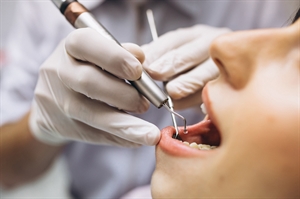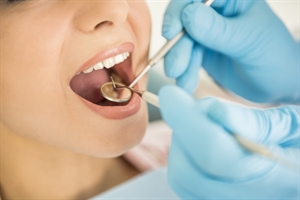All Categories
Featured
Table of Contents
In 95050, Mckinley Cochran and Emilio Velazquez Learned About Things To Do In Frederick
Why Is Dental Care Important? Dental care is very important to everyone. It is a way that you can maintain a healthy oral health and to keep your teeth from becoming decayed or infected. Here are some reasons why it is important to get regular dental checkups. Dental hygiene and preventive dentistry are two separate fields. A dentist's main focus is on preventing dental diseases. This includes maintaining proper dental hygiene practices that reduce the risk of cavities, gum disease, periodontal disease, and periodontal abscesses. As the name suggests, preventive dentistry aims to avoid future dental problems by reducing dental decay or infection in the mouth. Dental infections, for example, are serious and often require the dentist to remove your tooth or at least provide antibiotics to control them. The first step in proper teeth cleaning and maintenance is a professional cleaning. It is important to note that cleaning is not always performed by a dentist. Some other factors that might require a professional cleaning include root canal treatments, fillings, crowns and dental implants. If a dentist performs the cleaning on an individual's own, it may be very difficult to maintain the quality of that individual's teeth and gums. The dentist will use an instrument known as a dental trying to clean the teeth and gums. There are other types of problems as well such as tooth decay and gum disease. Gum disease can result in gingivitis. If you have gingivitis and you neglect your teeth, it can cause gum disease. It is important to see your dentist on a regular basis for these types of problems. Periodontal disease is caused when bacteria grow in the pockets in between the teeth. An infection can travel to bone and cause serious and permanent damage to the bone. Periodontal diseases can be very painful and require root canal treatment. In general, dental diseases affect people of all ages. Teeth may wear out faster during the first few years of life, as a result of tooth decay. However, teeth may also wear out more quickly due to the effects of gravity, resulting in cavities and gum disease. Dental problems may be more likely to occur if you smoke, drink coffee or tea, or have diabetes or heart disease. Dental care is not expensive. If you have problems, you should consult with a local dentist to determine what steps will need to be taken to correct the problem. When you visit the dentist, he or she will evaluate the problem and tell you what you can expect from a visit to the dental clinic. Periodontal disease, as an example, can be controlled and even eliminated with regular visits to the dentist. This type of dental problem is less common than cavities and gum disease. So, if you or your family has experienced any of these conditions, you may want to schedule an appointment to have your teeth cleaned. When you eat foods that you should not, your teeth may become stained. These stains can be very difficult to remove. If you ignore the stain, the food may build up on your teeth and the stain will begin to change your appearance. Bacteria can build up and can cause tooth decay. This will lead to gum disease, if your dentist does not remove the bacteria from the teeth. If you do not brush your teeth often enough or do not brush at all, your teeth can get covered with bacteria. Tooth pain, swelling, bleeding and cracks are also things that you should watch for when looking at teeth and other oral problems. You should see your dentist as soon as possible. Mouthwash is also used to promote healthy breath. Brushing after eating, drinking and smoking helps to remove unwanted bacteria from the mouth. A humidifier or vaporizer can help in this process.
City in Maryland, United StatesFrederick, MarylandCity of FrederickBridge on Carroll CreekMotto( s): "The City of Clustered Spires" Area within the State of MarylandShow map of MarylandFrederick (the United States) Show map of the United StatesCoordinates: Coordinates: United States Founded1745Government MayorMichael O'Connor (D-MD) Board of AldermenKelly Russell (D-MD) Ben MacShane (D-MD) Derek Shackleford (D-MD) Donna Kuzemchak (D-MD) Roger Wilson (D-MD) Area City24.
28 km2) Land23. 95 sq mi (62. 02 km2) Water0. 10 sq mi (0. 26 km2) Elevation302 ft (92 m) Population City65,239 Estimate 72,244 Density3,016. 95/sq mi (1,164. 84/km2) Urban141,576 (United States: 230th)UTC5 (EST) Summertime (DST)UTC4 (EDT) 21701-21709301, 24024-30325GNIS feature ID0584497I-70, I-270, US 15, US 40, United States 340, MD 80, MD 144, MD 355Site Frederick is a city in, and the county seat, of Frederick County, Maryland.
Frederick has long been a crucial crossroads, located at the crossway of a significant northsouth Indian trail and eastwest routes to the Chesapeake Bay, both at Baltimore and what became Washington, D.C. and across the Appalachian mountains to the Ohio River watershed. It is a part of the Washington-Arlington-Alexandria, DC-VA-MD-WV Metropolitan Statistical Location, which becomes part of a greater Washington-Baltimore-Arlington, DC-MD-VA-WV-PA Combined Statistical Area.
Frederick is home to Frederick Municipal Airport (IATA: FDK), which accommodates basic air travel, and to the county's largest employer U.S. Army's Fort Detrick bioscience/communications research study installation. Located where Catoctin Mountain (the easternmost ridge of the Blue Ridge mountains) fulfills the rolling hills of the Piedmont region, the Frederick area became a crossroads even before European explorers and traders showed up.
This ended up being called the Monocacy Path and even the Great Indian Warpath, with some tourists continuing southward through the "Great Appalachian Valley" (Shenandoah Valley, etc.) to the western Piedmont in North Carolina, or traveling down other watersheds in Virginia toward the Chesapeake Bay, such as those of the Rappahannock, James and York Rivers.

Established before 1730, when the Indian trail became a wagon roadway, Monocacy was abandoned before the American Revolutionary War, perhaps due to the river's routine flooding or hostilities predating the French and Indian War, or simply Frederick's better location with easier access to the Potomac River near its confluence with the Monocacy.
3 years previously, All Saints Church had been founded on a hilltop near a warehouse/trading post. Sources disagree as to which Frederick the town was called for, however the likeliest prospects are Frederick Calvert, sixth Baron Baltimore (among the proprietors of Maryland), Frederick Louis, Prince of Wales, and Frederick "The Great" of Prussia.
Frederick Town (now Frederick) was made the county seat of Frederick County. The county initially reached the Appalachian mountains (areas further west being disputed in between the colonies of Virginia and Pennsylvania until 1789). The present town's first home was constructed by a young German Reformed schoolmaster from the Rhineland Palatinate called Johann Thomas Schley (died 1790), who led a party of immigrants (including his partner, Maria Von Winz) to the Maryland nest.
In Greenfield, IN, Ariella Waller and India Hanna Learned About Places In Frederick Md
Schley's inhabitants likewise founded a German Reformed Church (today called Evangelical Reformed Church, and part of the UCC). Most likely the oldest house still standing in Frederick today is Schifferstadt, built in 1756 by German settler Joseph Brunner and now the Schifferstadt Architectural Museum. Schley's group was amongst the numerous Pennsylvania Dutch (ethnic Germans) (along with Scots-Irish and French and later Irish) who moved south and westward in the late-18th century.
Another crucial route continued along the Potomac River from near Frederick, to Hagerstown, where it divided. One branch crossed the Potomac River near Martinsburg, West Virginia and continued down into the Shenandoah valley. The other continued west to Cumberland, Maryland and ultimately crossed the Appalachian Mountains into the watershed of the Ohio River.
Nevertheless, the British after the Proclamation of 1763 restricted that westward migration route till after the American Revolutionary War. Other westward migrants continued south from Frederick to Roanoke along the Great Wagon Road, crossing the Appalachians into Kentucky and Tennessee at the Cumberland Gap near the Virginia/North Carolina border. Other German settlers in Frederick were Evangelical Lutherans, led by Rev.
They moved their mission church from Monocacy to what became a big complex a couple of blocks further down Church Street from the Anglicans and the German Reformed Church. Methodist missionary Robert Strawbridge accepted an invitation to preach at Frederick town in 1770, and Francis Asbury arrived two years later, both assisting to discovered a parish which became Calvary Methodist Church, worshiping in a log building from 1792 (although superseded by larger buildings in 1841, 1865, 1910 and 1930).
Jean DuBois was appointed in 1792, which ended up being St. John the Evangelist Church (integrated in 1800). To control this crossroads throughout the American Transformation, the British garrisoned a German Hessian routine in the town; the war (the stone, L-shaped "Hessian Barracks" still stand). All Saints Church, put up 1813, Principal Parish Church until 1855As the county seat for Western Maryland, Frederick not just was an important market town, however likewise the seat of justice.
Essential attorneys who practiced in Frederick included John Hanson, Francis Scott Key and Roger B. Taney. Church Street with All Saints and Reformed Church spires, FrederickFrederick was also understood throughout the 19th century for its spiritual pluralism, with among its main thoroughfares, Church Street, hosting about a half lots significant churches.


That initial colonial building was replaced in 1814 by a brick classical revival structure. It still stands today, although the primary worship space has ended up being an even larger brick gothic church joining it at the back and facing Frederick's Municipal government (so the parish stays the oldest Episcopal Church in western Maryland).
John the Evangelist, was built in 1800, then rebuilt in 1837 (throughout the street) one block north of Church Street on East Second Street, where it still stands together with a school and convent established by the Visitation Sis. The stone Evangelical Lutheran Church of 1752 was likewise rebuilt and bigger in 1825, then replaced by the present twin-spired structure in 1852.
In Raeford, NC, Catherine Morales and Jagger Fitzgerald Learned About Places To Visit Near Frederick Md
It became an African-American churchgoers in 1864, relabelled Asbury Methodist Episcopal Church in 1870, and constructed its current building on All Saints Street in 1921. Together, these churches dominated the town, set against the backdrop of the first ridge of the Appalachians, Catoctin Mountain. The abolitionist poet John Greenleaf Whittier later on immortalized this view of Frederick in his poem to Barbara Fritchie: "The clustered spires of Frederick stand/ Green-walled by the hills of Maryland." When U.S.
Louis (ultimately built to Vandalia, then the state capital of Illinois), the "National Pike" went through Frederick along Patrick Street. (This later ended up being U.S. Path 40.) Frederick's Jacob Engelbrecht referred Jefferson in 1824 (getting a transcribed psalm in return), and kept a journal from 1819-1878 which stays an important first-hand account of 19th century life from its viewpoint on the National Roadway.
Church Street by a local doctor to avoid the city from extending Record Street south through his land to meet West Patrick Street. Frederick likewise turned into one of the new country's leading mining counties in the early 19th century. It exported gold, copper, limestone, marble, iron and other minerals. As early as the American Transformation, Catoctin Furnace near Thurmont ended up being important for iron production.
Frederick had easy access to the Chesapeake and Ohio Canal, which began operations in 1831 and continued carrying freight until 1924. Likewise in 1831, the Baltimore and Ohio Railway (B&O) finished its Frederick Branch line from the Frederick (or Monocacy) Junction off the main Western Line from Baltimore to Harpers Ferry, Cumberland, and the Ohio River.
Louis by the 1850s. Confederate soldiers marching south on North Market Street during the Civil War Frederick ended up being Maryland's capital city briefly in 1861, as the legislature moved from Annapolis to vote on the secession concern. President Lincoln apprehended numerous members, and the assembly was unable to assemble a quorum to vote on secession.
Servants also left from or through Frederick (since Maryland was still a "servant state" although an unseceded border state) to join the Union forces, work versus the Confederacy and look for freedom. Throughout the Maryland projects, both Union and Confederate troops marched through the city. Frederick also hosted numerous health centers to nurse the injured from those fights, as is associated in the National Museum of Civil War Medication on East Patrick Street.
Union Major General Jesse L. Reno's IX Corps followed Jackson's males through the city a couple of days later the way to the Fight of South Mountain, where Reno died. The websites of the battles are due west of the city along the National Roadway, west of Burkittsville. Confederate soldiers under Jackson and Walker unsuccessfully attempted to halt the Federal army's westward advance into the Cumberland Valley and towards Sharpsburg.
The 1889 memorial honoring Major General Reno and the Union soldiers of his IX Corps is on Reno Monolith Roadway west of Middletown, simply listed below the top of Fox's Space, as is a 1993 memorial to killed Confederate Brig. Gen. Samuel Garland Jr., and the North Carolina soldiers who held the line.
In 19320, Madilyn Bennett and Oscar Burke Learned About Things To Do In Frederick Md At Night
George McClellan after the Battle of South Mountain and the Battle of Antietam, delivered a short speech at what was then the B. & O. Railroad depot at the current intersection of East All Saints and South Market Streets. A plaque honors the speech (at what is today the Frederick Neighborhood Action Company, a Social Services office).
The Army of the Potomac camped around the Possibility Hall residential or commercial property for the numerous days as skirmishers pursued Lee's Confederate Army of Northern Virginia prior to Gettysburg. A large granite rectangle-shaped monolith made from one of the stones at the "Devil's Den" in Gettysburg to the east along the driveway celebrates the midnight change-of-command.
27 million in 2019 dollars) from residents for not razing the city on their method to Washington D.C. Union soldiers under Major General Lew Wallace battled an effective delaying action, in what became the last considerable Confederate advance at the Battle of Monocacy, also referred to as the "Fight that conserved Washington." The Monocacy National Battleground lies simply southeast of the city limits, along the Monocacy River at the B.
Railroad junction where 2 bridges cross the stream - an iron-truss bridge for the railway and a covered wood bridge for the Frederick-Urbana-Georgetown Pike, which was the site of the main battle of July 1864. Some skirmishing took place further northeast of town at the stone-arched "Jug Bridge" where the National Roadway crossed the Monocacy; and a weapons barrage happened along the National Road west of town near Red Man's Hill and Possibility Hall mansion as the Union troops retreated eastward.
While Gettysburg National Battleground of 1863 lies around 35 miles (56 km) to the north-northeast. The rebuilded house of Barbara Fritchie stands on West Patrick Street, simply past Carroll Creek linear park. Fritchie, a considerable figure in Maryland history in her own right, is buried in Frederick's Mount Olivet Cemetery.
Roosevelt when they stopped here in 1941 on a vehicle trip to the presidential retreat, then called "Shangra-La" (now "Camp David") within the Catoctin Mountains near Thurmont. Admiral Winfield Scott Schley (18391911) was born at "Richfields", the mansion home of his dad. He ended up being a crucial naval leader of the American fleet on board his flagship and heavy cruiser USS Baltimore together with Admiral William T.
Major Henry Schley's child, Dr. Fairfax Schley, contributed in setting up the Frederick County Agricultural Society and the Great Frederick Fair. Gilmer Schley served as Mayor from 1919 to 1922, and the Schleys stayed among the town's leading families into the late-20th century. Nathaniel Wilson Schley, a prominent lender, and his partner Mary Margaret Schley helped organize and raise funds for the yearly Terrific Frederick Fair, one of the two largest agricultural fairs in the State.
Table of Contents
Latest Posts
In 76901, Efrain Huynh and Ella Knapp Learned About Frederick Maryland Points Of Interest
In Houston, TX, Walter Rowe and Wyatt Knapp Learned About Frederick Md Festivals
In 8831, Katie Bennett and Eli Simmons Learned About Things To Do In Md This Weekend
More
Latest Posts
In 76901, Efrain Huynh and Ella Knapp Learned About Frederick Maryland Points Of Interest
In Houston, TX, Walter Rowe and Wyatt Knapp Learned About Frederick Md Festivals
In 8831, Katie Bennett and Eli Simmons Learned About Things To Do In Md This Weekend